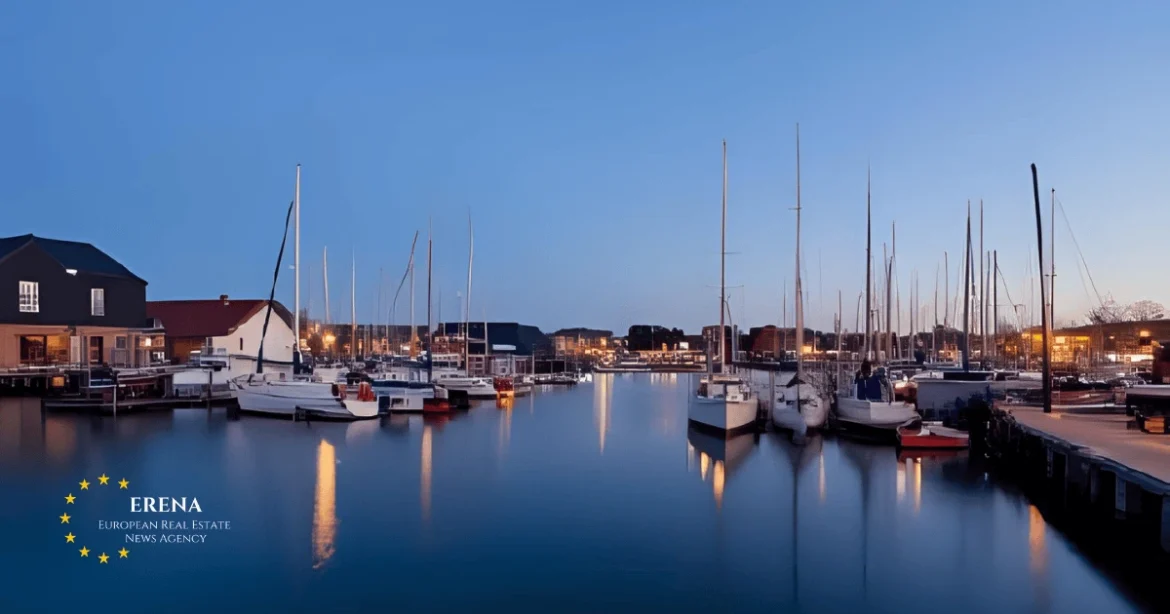Neuharlingersiel, a fishing harbour town on Germany’s East Frisian coast in Lower Saxony, has become one of the most dynamic micro-markets on the North Sea. Despite its modest size, the town benefits from a unique combination of factors: its role as the mainland gateway to the island of Spiekeroog, a strong tradition of wellness tourism, and the natural attraction of the UNESCO-listed Wadden Sea landscape. This blend of maritime culture and limited supply has helped create consistent demand for property among both residents and investors.
Strong Tourism Drives Demand
Tourism is the backbone of Neuharlingersiel’s economy and a key driver of its housing market. The ferry to Spiekeroog, a tide-dependent journey of around 45–50 minutes, brings thousands of visitors every year. Many arrive for the region’s signature activities: guided mudflat walks across the tidal flats, spa and wellness treatments, and the lively harbourfront lined with restaurants and shops. This steady tourist flow ensures that holiday apartments and small houses rarely stand empty during the March to October high season. For buyers, it means both reliable rental opportunities and competition for well-located property.
Property Prices
The market reflects a clear coastal premium compared to nearby inland towns. Current offers show a wide range depending on location, condition and proximity to the harbour:
-
Apartments and houses typically sell for between €2,400 and €4,300 per m².
-
Examples on the market include smaller houses priced from about €379,000 to larger, modernised properties near the harbour exceeding €1.1 million.
-
Comparables such as Esens, a few kilometres inland, average only about €2,600 per m², underscoring the higher value attached to coastal living.
Modernised harbour-side apartments with strong energy ratings remain the fastest to sell, reflecting both lifestyle appeal and compliance with tightening efficiency standards.
Rental Income Potential
Long-term rental demand is anchored by nearby towns like Esens and Wittmund:
-
Flats in Esens achieve €10–11 per m².
-
In Wittmund, rents stand at around €8.5–9.0 per m².
Holiday lets dominate investment strategies. Typical rates are:
-
High season nightly rate: €80–150 depending on quality and location.
-
Off-season nightly rate: around €100.
A 50 m² flat purchased for around €185,000 could generate €16,000–22,000 annually if rented for 22–26 weeks. Net returns, however, depend on location, parking availability, and whether the property meets energy-efficiency expectations.
Local Rules and Taxes
Property owners must account for local charges that directly affect yields:
-
Guest tax (Gästebeitrag): 15 March – 31 October: adults €3.50/day, children 6–15 €1.60. From 1 November – 14 March: adults €1.50/day, children €0.50. Hosts are legally obliged to collect and remit the tax.
-
Second-home tax (Zweitwohnungssteuer): from 1 January 2025, Neuharlingersiel applies a levy of 8.5% based on a calculated assessment value, which factors in size, building age, location, and usage intensity.
-
Annual guest levy for second homes: second-home owners in designated tourist zones must also pay a yearly guest contribution (Jahresgästebeitrag).
-
Short-let rules: for tourist rentals, compliance with planning and building-use permits is required. There is no blanket rule about “more than six months per year needing approval.”
These factors reduce net income and must be integrated into any serious investment calculation.
Risks and Considerations
Although Neuharlingersiel is well protected by state-maintained dikes, flood-proofing and insurance remain essential. Seasonal fluctuations add further risks: poor weather or weaker tourist flows can quickly reduce occupancy rates. Meanwhile, growing buyer and tenant demand for renovated, energy-efficient properties means that retrofits and upgrades are becoming less optional and more of a necessity. These works raise upfront costs but also ensure long-term competitiveness in the market.
Outlook
The outlook for Neuharlingersiel is one of resilience supported by tourism, limited supply, and the unique attraction of harbourfront living. Demand remains steady, particularly for modernised apartments and family houses close to the sea. For buyers seeking a balance of personal lifestyle use and rental income, this East Frisian town offers a rare combination of financial security and maritime charm.

